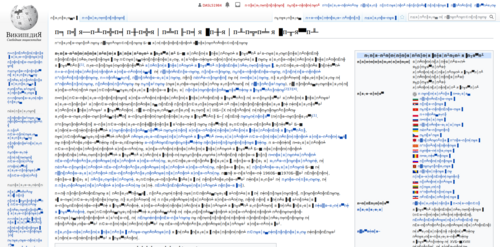
Back موجيباكي Arabic Mojibake AST Mojibake Catalan Zeichensalat German Mojibake Greek Moĝibako Esperanto Mojibake Spanish موجیباکه Persian Mojibake French Mojibake Galician
This article needs additional citations for verification. (March 2023) |


Mojibake (Japanese: 文字化け; IPA: [mod͡ʑibake], "character transformation") is the garbled or gibberish text that is the result of text being decoded using an unintended character encoding.[1] The result is a systematic replacement of symbols with completely unrelated ones, often from a different writing system.
This display may include the generic replacement character ("�") in places where the binary representation is considered invalid. A replacement can also involve multiple consecutive symbols, as viewed in one encoding, when the same binary code constitutes one symbol in the other encoding. This is either because of differing constant length encoding (as in Asian 16-bit encodings vs European 8-bit encodings), or the use of variable length encodings (notably UTF-8 and UTF-16).
Failed rendering of glyphs due to either missing fonts or missing glyphs in a font is a different issue that is not to be confused with mojibake. Symptoms of this failed rendering include blocks with the code point displayed in hexadecimal or using the generic replacement character. Importantly, these replacements are valid and are the result of correct error handling by the software.
- ^ King, Ritchie (2012). "Will unicode soon be the universal code? [The Data]". IEEE Spectrum. 49 (7): 60. doi:10.1109/MSPEC.2012.6221090.